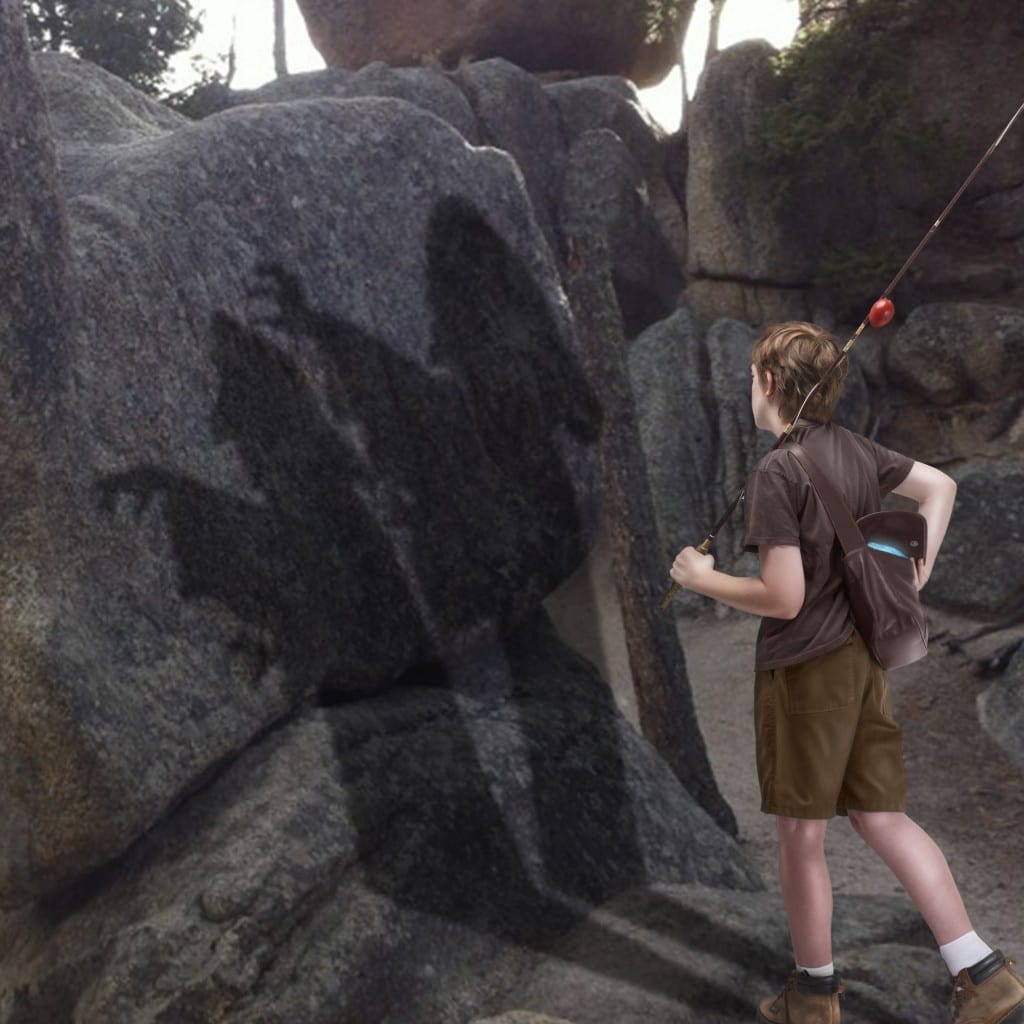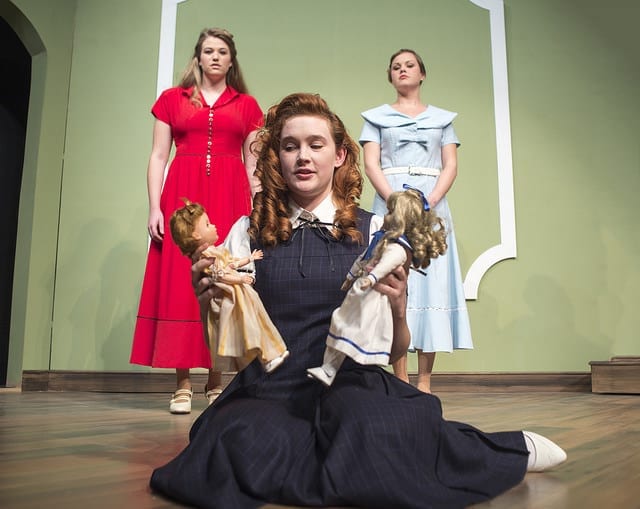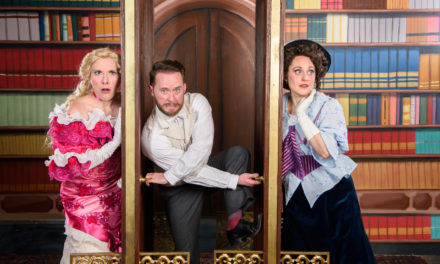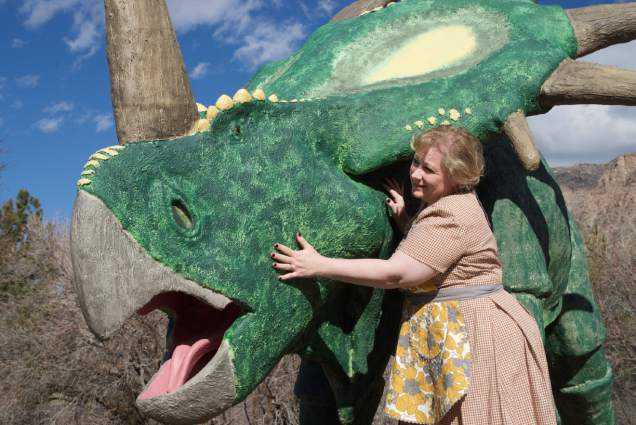OREM — The ambiance before The Story Stone is quite soothing. Actors mill about the theatre-in-the-round space and musicians play a variety of instruments, while a few of the actors sing quietly. The soft lighting filters through the white cloth draped from the ceiling and sets the mood for a unique evening of theatre.
The Story Stone, written by Wendy Gourley, takes place in a village that is ethnically divided between the conquering Navas and the oppressed Pastios. A member of the Nava ruling class, Lux, and his Pastio servant, Cor, are drawn to a mysterious newcomer who gives them his story stone. The stone functions as a medium for stories that are unveiled, but the stone only works when Lux and Cor use it together. This binds the two boys together and forges an unlikely friendship amid the tensions of their homeland.
What is most striking aspect of the production is its use of music (much of it from George Grant) that draws from non-Western sounds to create mystical feeling that establishes the setting of the play as being very different from modern day America. The music is also paired with beautiful movement that provides imagery to accompany the vocals and narration. Director Barrett Ogden used these elements and the comforting atmosphere to create a visually interesting piece of theatre.
The performances featured Elizabeth Golden as a narrator of the story of Lux (Shawn Saunders) and Cor (Aubrey Bench), which in turn serves as a frame tale for other stories. Golden smoothly commands the stage as a quiet, intrepid presence that seems quietly in control of the tale, especially at the end of the tale when she interacts with one of the characters in the story. The other two leads, Saunders and Bench, were playful in their portrayals of the two young protagonists. Both performers were interesting as their characters stood up to authority figures (like Musca, played by Toria Truax, or Lux’s mother, played by Kaitlyn Dahl). On the other hand, neither performer passes well as a teenaged boy, especially Bench—a fact that works to the story’s detriment. Likewise, Truax is not very intimidating as the Postio leader, despite the dialogue indicating she should be ruthless.
Visually, the most striking part of the production is the lighting (designed by Jill Loveridge) and the set (designed by Brian Healy). The simple, beautifully painted round platform at the center of the stage provided a clear view of the action from every seat in the theater (unlike last spring’s production of The Crucible in the same space), and the white cloth on the ceiling, reminiscent of boat sails, lent a supernatural feel to the production (although it had nothing to do with the story).
But the beautiful visuals and quiet instrumental music do not save The Story Stone from its basic script flaws. Gourley’s story feels like a secular parable that tries to teach its audience a lesson without having any grounding in a larger moral framework. (Even Bertolt Brecht had the moral framework of socialism for The Good Person of Szechwan.) The result is a lesson that is little more than, “Be nice to others so that they are nice to you, and everyone will get along.” Although it’s a nice lesson, it is also one that doesn’t need an hour and a half to teach. Also, the stories with the story of Lux and Cor are sometimes problematic. One story (the tale of debate between the queen and the chicken farmer) was so opaque that the intended lesson was not clear, while others had lessons that were so obviously connected to the outside narrative that it became pedantic. I also question Gourley’s decision to make some of the last half hour deal with propaganda, political subversion, and parliamentary procedure in a play directed at teenagers.
Paired with these script problems were some Ogden’s directorial decisions that did not make sense. First, the play started with a musical chant that lasted over 10 minutes and did little to establish the action of the rest of the play. I have difficulty believing that the play’s intended audience would enjoy the lengthy chant, much of which was sung by actors in a circle with their backs to the audience. It also wasn’t clear to me why the titular story stone was pantomimed (and seemed to change size) when it was first introduced, but became a real stone at the end of the play. Finally, Ogden did not make the “rules” of the magic of the story stone clear. Some stories were told by characters without the use of the stone, which earlier had been established as an important medium through which Lux and Cor receive stories. This made the importance of the stone seemed diminished and only added confusion.
So, as a piece of theatre for young audiences, The Story Stone does not succeed. My wife, a middle school drama teacher, said that she would not recommend it to her students because it would be too long and boring for that age group. But as a piece of abstract experiential theatre influenced by non-Western traditions and modern theatrical philosophies, it succeeds much better. The traditional rules of what a play “should be” were broken repeatedly during the performance—something that Utah audiences need to experience more often. Despite its flaws, The Story Stone is a welcomed change from the typical theatrical experience. Hopefully, the show will serve as a dry run for UVU’s upcoming production of The Caucasian Chalk Circle.






